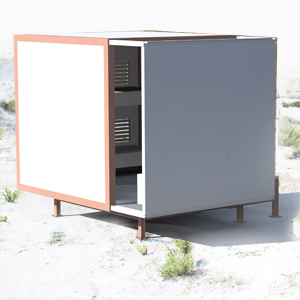



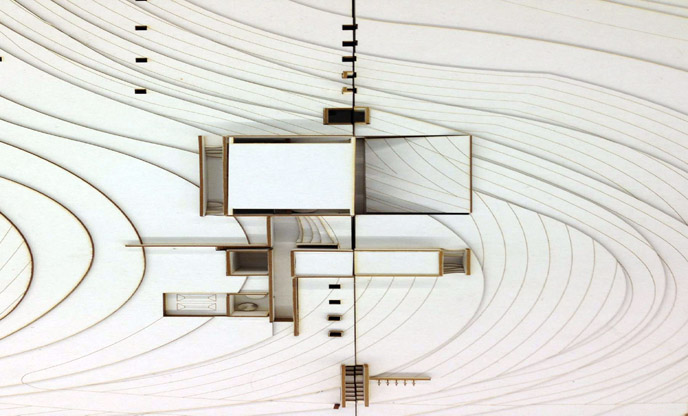

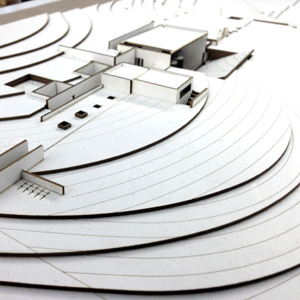





Moving land. That is how somebody would describe Yali island. Sandy ground, pines, extents of alsylion. Landscape is being moved, digged, reshaped. For 150 years a mining company sculptures Yali island.This permanent but constant change is embodied in the landscape, in the limits of island, its culture, in the life of the few residents.
The convention of the company with the municipality of Nisyros, which belongs Yali island, expires in 15 years. The excavation comes confronted with the history of place, while its limits meet a Neolithic settlement. Until that time and when the mining activities stop, aiming at the appointment of this geological and morphological unique place, we will follow certain strategies of a particular habitation, a different activation of Yali island. The proposed intervention aims at activating the island in a productive way, enforse its economic development and finally include it at the tourist map as a special destination.
The particular geomorphology of Yali attracts scientists from all over Greece and the world, combining geological, historical, archaeological and environmental interest. Therefore, a research interdisciplinary center is proposed, covering research relating to Glass and the Dodecanese in general. Moreover, the territorial composition of the island favors crops as pumice hold as much moisture as necessary to minimize the need for irrigation. Thus, vineyards will be cultivated, which are operated in conjunction with the winery.
The proposed intervention is placed in the neck of the island, on an axis wich divides it into two sections and forms a linear continuation of the breakwater. The linear approach, besides a strict cut off in a landscape that is very interesting to observe from the inside, also follows the linear process of wine production and also that of the scientific research. The axis is intersected by three paths that define different functions over the course of the visitor.
Moreover, a settlement in the old port of fishermen is redrawn, which will meet the needs of workers of the quarry, the research center and the winery. The hosting of the visitors is ensured by placing small guesthouses that can be installed or removed depending on the needs arising, near the irrigation platforms of vineyards.
During the tour around the open mine pit visitors discover new perspectives of a landscape that has changed dramatically due to mining. The island's touristic interest is also intensified by selected paths which lead the visitor to places and points classified and grouped according to the kind of interest.
Supervisor: Papadopoulos Spiros
Reference Number: 426
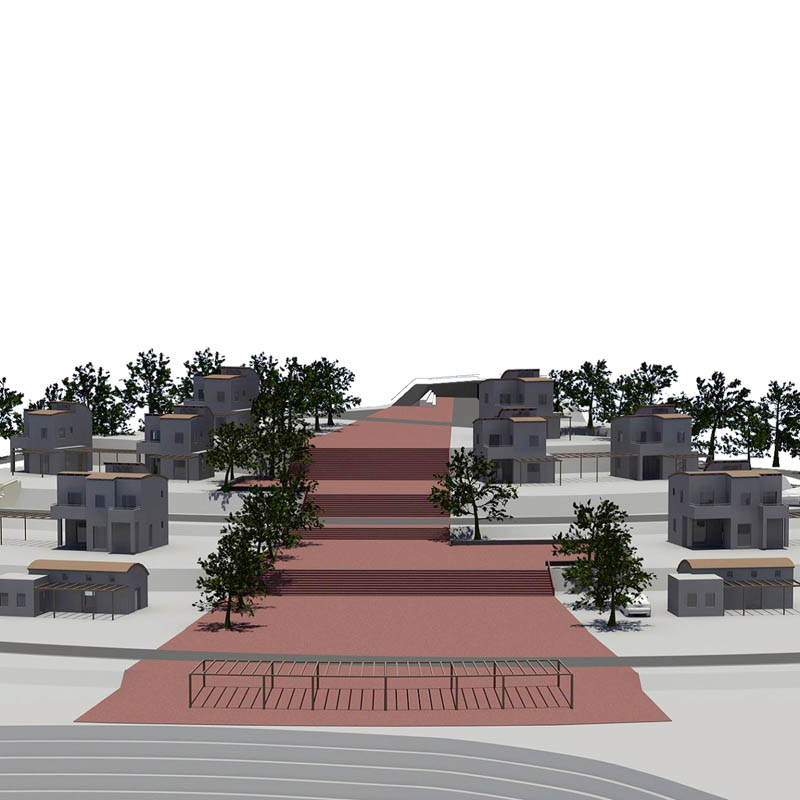

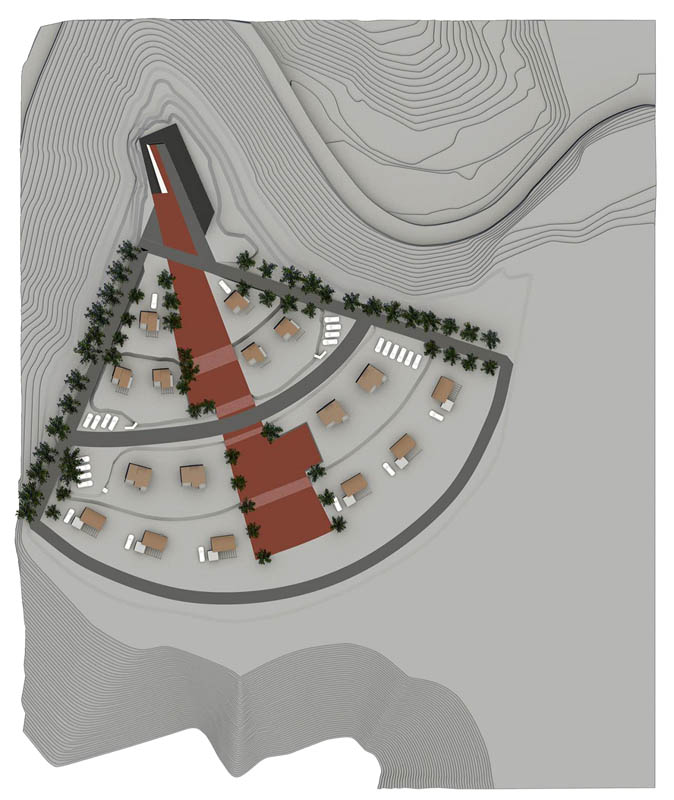

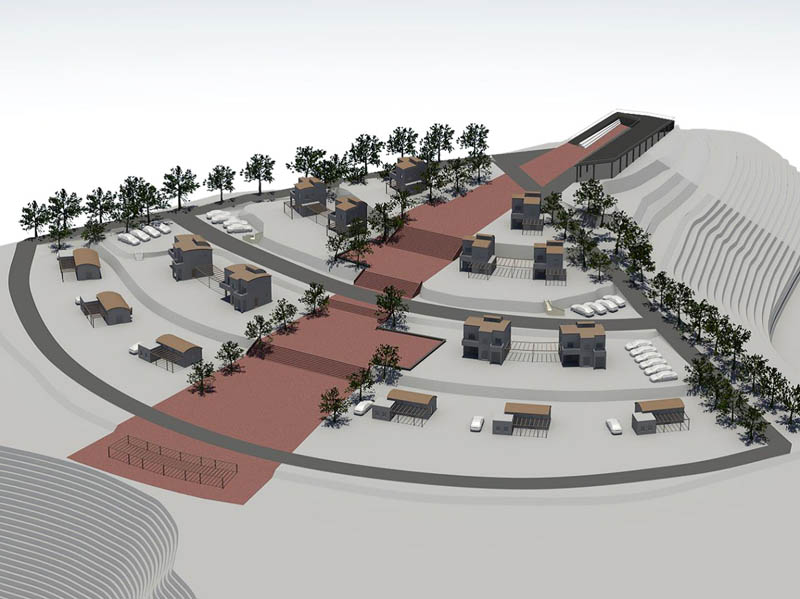



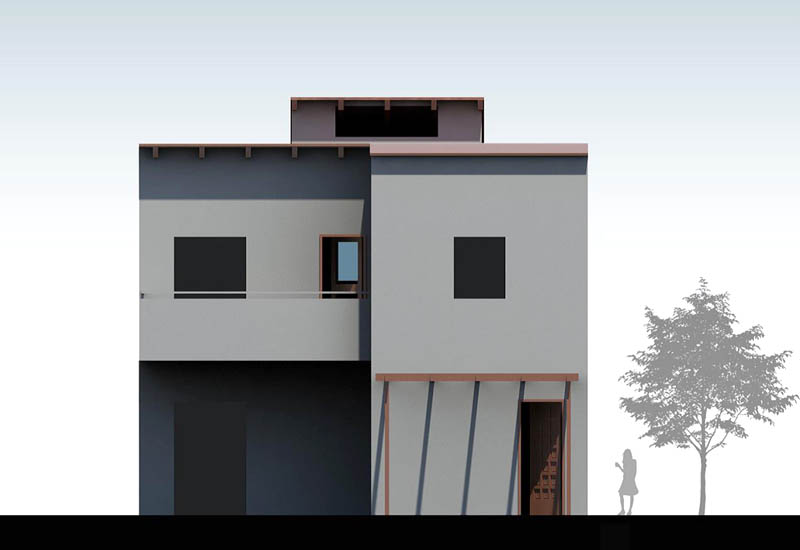



The aim of the project is the creation of a bioclimatic village in the area of the Holy Apostles of Rhodes.
The altitude in the area escalates between 126 to 135 meters above sea level . The orientation of the square is south . This requires us to allocation of housing depending on the contours in arched address.
The settlement is defined by the ring road and cut into two parts by a central axis. The movement of housing is through pedestrianization , perpendicular to the settlement. Intervals provided an opportunity to stop and Day use with the landscape. At the bottom there is a longitudinal roof . The same is observed in drawing square in the upper level of the settlement. The unequal provision enables housing a portion thereof and simultaneous access to passable roof . In this way the roof turned into artificial observatory.
The village is divided into four zones:
The first and second placed residences 100 m² for families with two rooms . In the third zone positioned residences 120 m² for families with two rooms . The fourth and lowest zone , houses 55 m for seniors.
In the architectural character of the settlement, we considered creating neighborhoods and this is achieved with the four zones are created , as more specifically the union of some of them by providing communal open spaces. The distances between dwellings are such as to allow the houses to utilize solar gain . The houses do not shade each other throughout the year since the distance of one from the other is at least twice the height. In this contribution and uneven plot of the settlement. Planting acts as a windbreak in northern western and eastern winds providing the required wind protection . ( trees planted on the north side are evergreen to provide wind protection throughout the year and especially during the winter months). Also planting contributes to creating the right microclimate of the area.
Supervisor: Adamakis Kostas
Reference Number: 475
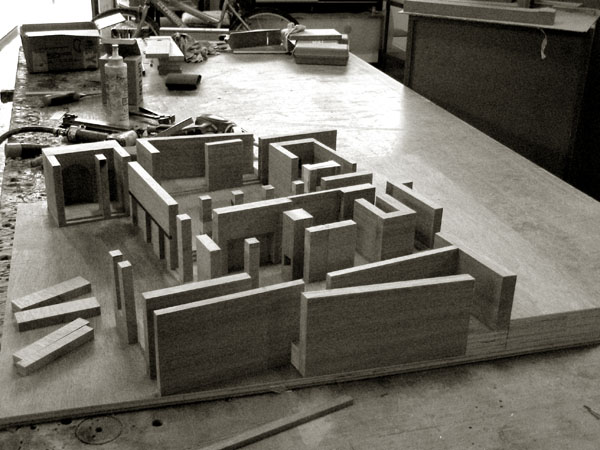



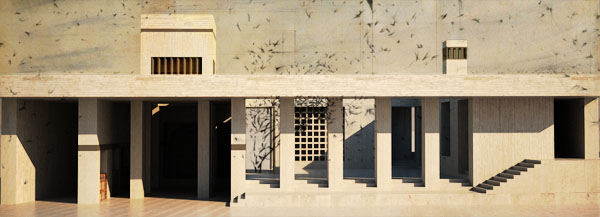

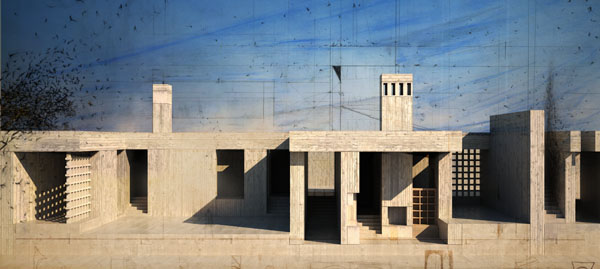

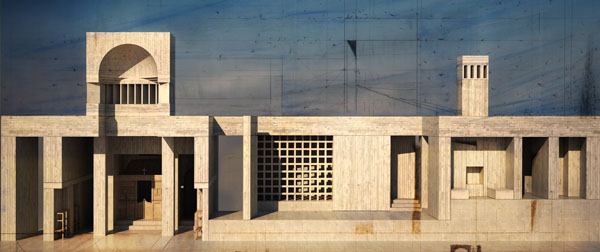

The purpose of the project is to design a contemporary accommodation of the monastery of St. Savvas the Sanctified, to serve the monks when they need to stay in the city of Bethlehem, for any monastery matters or reasons of health and bureaucracy.
The monastery, referenced as Lavra as well, founded by Saint Savvas the Sanctified, operates continuously for 1500 years in the desert of Judea in Palestine. This specific place is considered as one of the most important shrines of Orthodox Christianity.
The word Metochi is referred to a site or farm land belonging to a monastery (a monastery’s metochi), in which is usually placed a small chapel and residence for the monks who cultivate this farm. The "Metochion", in ecclesiastical terminology, constitutes a dependent part of the monastery to which it belongs, even if several monks live permanently in it.
The metochi in this project also serves as an intermediary space hosting the monastery pilgrims from around the world. Most non-Arab visitors coming from the airport in Tel Aviv may need to stay overnight in case the borders to the Palestinian territories are closed. The temple which is dedicated to Saint Savva serves as parish. This Metochi is developed through a system of courtyards spaces. The weather of Palestine urges the existence and the development of such architectural tradition. The arrangement of the private restrooms is protected from the places of worship and public reception. The solution aims to isolate symbolically the resident, monk or secular visitor, from the ephemeral pilgrim without entirely exclude their encounter and coexistence.
Supervisor: Kanarelis Theoklis
Reference Number: 428

